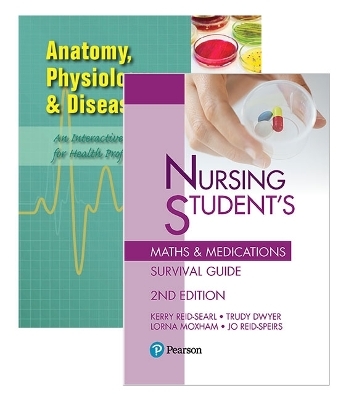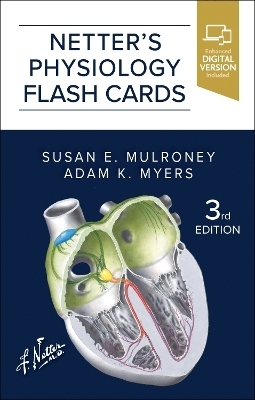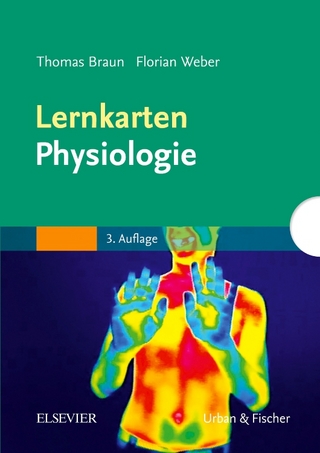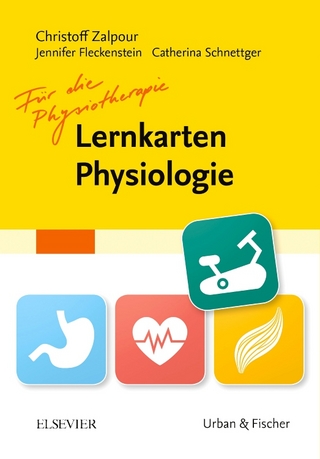
Anatomy, Physiology and Disease + Nursing Student's Maths & Medications Survival Guide
Pearson
978-1-4886-5795-5 (ISBN)
- Titel nicht im Sortiment
- Artikel merken
Nursing Student's Maths & Medications Survival Guide
This unrivalled, quick-reference guide supports students in the calculation of drug dosage. As a support text, Reid-Searl's Student's Maths & Medications Survival Guide assists students in the safe administration of medications in clinical settings.
The text can be used individually across students' education and into early practice, or as a tool to complement a comprehensive text such as Bullock, Fundamentals of Pharmacology.
Anatomy, Physiology, & Disease presents anatomy and physiology in the context of a journey to keep students engaged and interested. Features include an exciting chapter on biochemistry that helps students understand the relationship between chemistry and living organisms. Updated, full-colour illustrations and photos provide real-world examples for learners. Incorporating the latest research and clinical information, updated features include Amazing Body Facts, Clinical Application, and Pharmacology Corners. Hands-on activities at the end of each chapter reinforce what students are learning while supporting curriculum standards.
SamplesDownload the table of contents and sample pages from Nursing Student's Maths & Medications Survival Guide >.
Kerry Reid-Searl is currently a Professor of Innovation and Simulation in the School of Nursing and Midwifery at the University of Tasmania. Kerry has been involved in nursing education for more than 30 years and over this time she has remained clinically current. Her research interests include patient safety, simulation, paediatrics and wound care. Professor Trudy Dwyer has extensive learning and teaching expertise in both undergraduate and postgraduate research higher-degree programs. She has authored numerous books, book chapters and peer-reviewed journal articles and is a principal author of the Student Survival Guide series published by Pearson Australia. Her program of research is Quality and Safety in Healthcare, with a focus on recognition and responding to clinical deterioration, nurse-led models of care, simulation and knowledge translation. Professor Lorna Moxham started nursing in 1980 and is a 3-year specialist hospital-trained psychiatric nurse. Lorna is passionate about the nursing profession, particularly mental health nursing, and is actively contributing at regional, state, national and international levels.
Nursing Student's Maths & Medications Survival Guide
INTRODUCTION
Maths revisited
Mathematical symbols
Order of operations
Number fact grids
Time
Hindu Arabic and Roman numerals
Medication safety
Factor, decimal and percentage conversions
Numbered figures/tables
The base system
The decimal point
Measuring a fluid base chart
Revisiting basic algorithms
Working with fractions
Percentages
Rounding
The Metric System
SOME HANDY TABLES INVOLVING MEASUREMENT
Intravenous fluid requirements
Rule of nines
FORMULAS USED IN NURSING
Calculating dosage using a formula
APPLYING DRUG CALCULATIONS USING DOSAGES
Calculating oral medications
Calculating parenteral medications
SAFE MEDICATION ADMINISTRATION
Categories of drugs - schedules
What must be on a medication chart
What is in a medication order
What makes a medication order valid
What is on a medication label
Steps the Registered Nurse must take for telephone orders of prescription drugs
Frequency and times of medication administration
Commonly used and understood abbreviations
Other abbreviations
Intravenous fluids - what is on a fluid order
Abbreviations for intravenous fluids
Intravenous fluids - drip rates for giving
Anatomy, Physiology and Disease
Chapter 1 Anatomy, Physiology and Disease: Learning the Language
Chapter 2 The Human Body: Reading the Map
Chapter 3 Biochemistry: The Basic Ingredients of Life
Chapter 4 The Cells: The Raw Materials and Building Blocks
Chapter 5 Tissues and Systems: The Inside Story
Chapter 6 The Skeletal System: The Framework
Chapter 7 The Muscular System: Movement for the Journey
Chapter 8 The Integumentary System: The Protective Covering
Chapter 9 The Nervous System: The Body's Control Center
Chapter 10 The Endocrine System: The Body's Other Control Center
Chapter 11 The Senses: The Sights and Sounds
Chapter 12 The Cardiovascular System: Transport and Supply
Chapter 13 The Respiratory System: It's a Gas
Chapter 14 The Lymphatic and Immune Systems: Your Defense Systems
Chapter 15 The Gastrointestinal System: Fuel for the Trip
Chapter 16 The Urinary System: Filtration and Fluid Balance
Chapter 17 The Reproductive System: Replacement and Repair
Chapter 18 Basic Diagnostic Tests: What Do the Tests Tell Us?
Chapter 19 Anatomy and Physiology and the Scientific Method
Chapter 20 The Journey's End: Now What?
Chapter 21 Health Care: Careers and Career Planning
Appendix A: Medical Terminology , Word Parts, and Singular and Plural Endings
Appendix B: Clinical Abbreviations and “Do Not Use” List
Appendix C: Infectious Diseases and Their Pathogens
Appendix D: Laboratory Reference Values
Appendix E: Multisystem Effects of Various Diseases and Conditions
Appendix F: Vitamins and Minerals: Sources, Function, and Effects of Deficiency and Toxicity
Appendix G: Standard and Transmission-Based Precautions
| Erscheint lt. Verlag | 5.2.2019 |
|---|---|
| Sprache | englisch |
| Maße | 226 x 284 mm |
| Gewicht | 2221 g |
| Themenwelt | Schulbuch / Wörterbuch |
| Studium ► 1. Studienabschnitt (Vorklinik) ► Physiologie | |
| ISBN-10 | 1-4886-5795-5 / 1488657955 |
| ISBN-13 | 978-1-4886-5795-5 / 9781488657955 |
| Zustand | Neuware |
| Haben Sie eine Frage zum Produkt? |
aus dem Bereich


